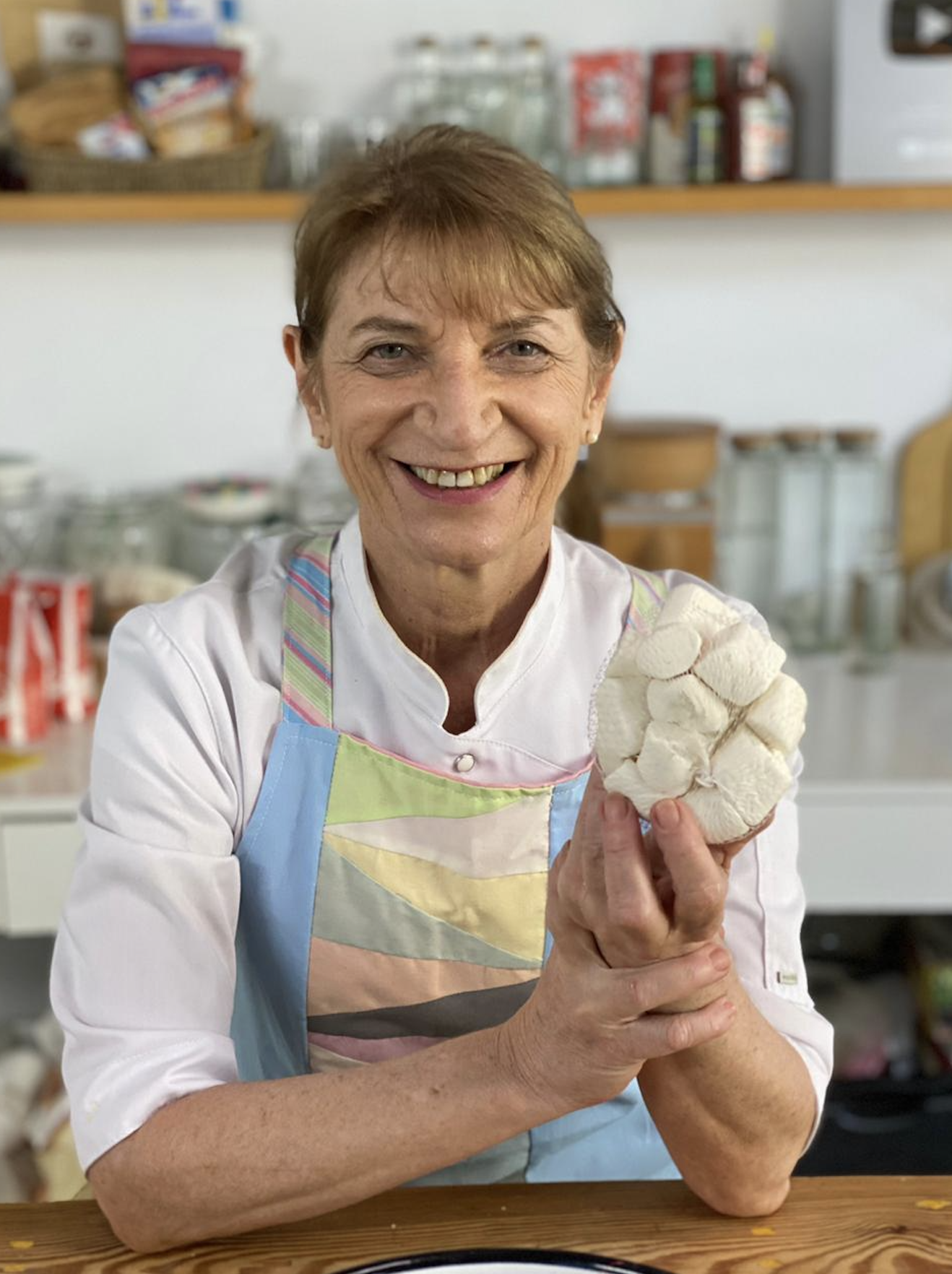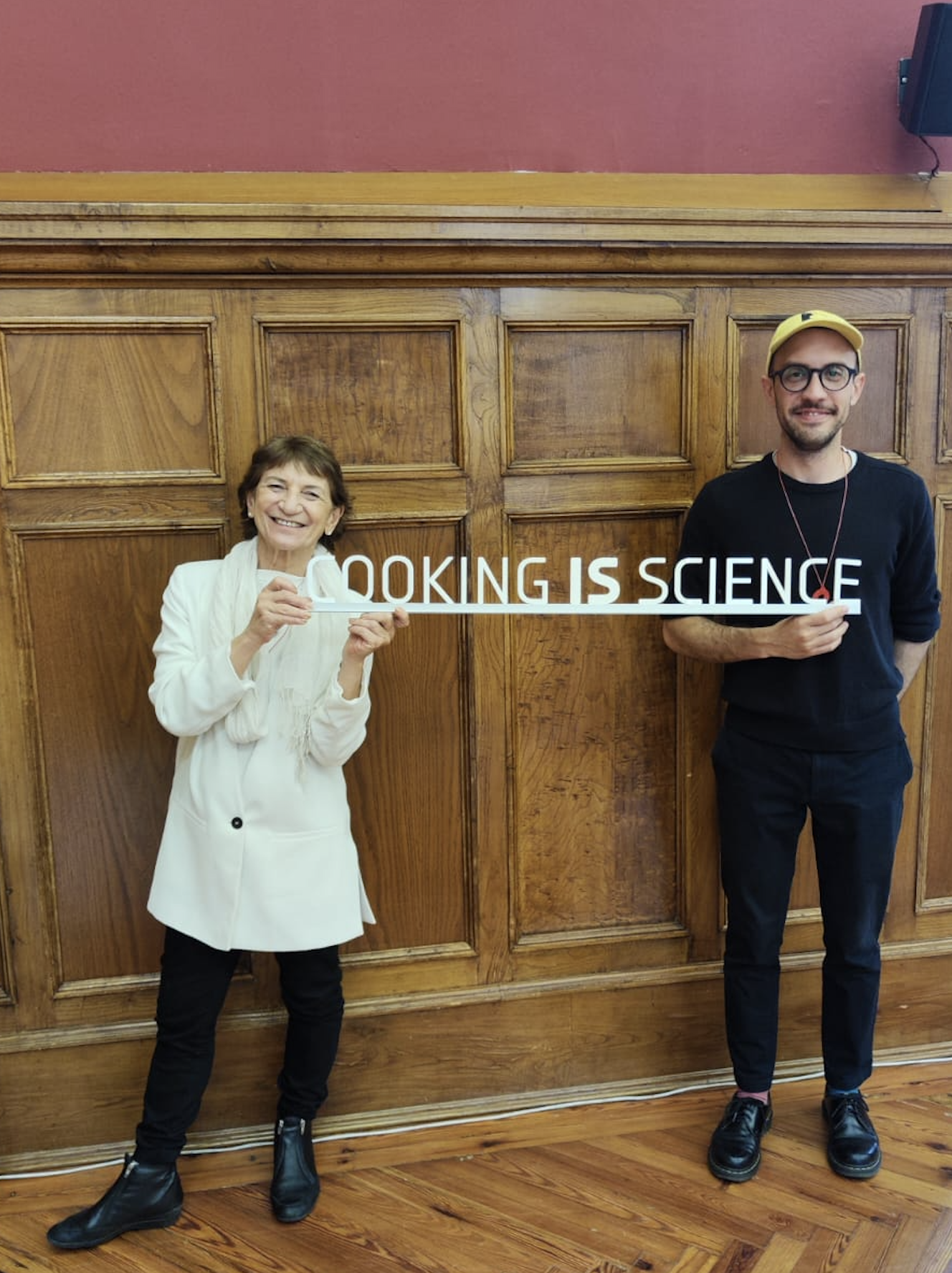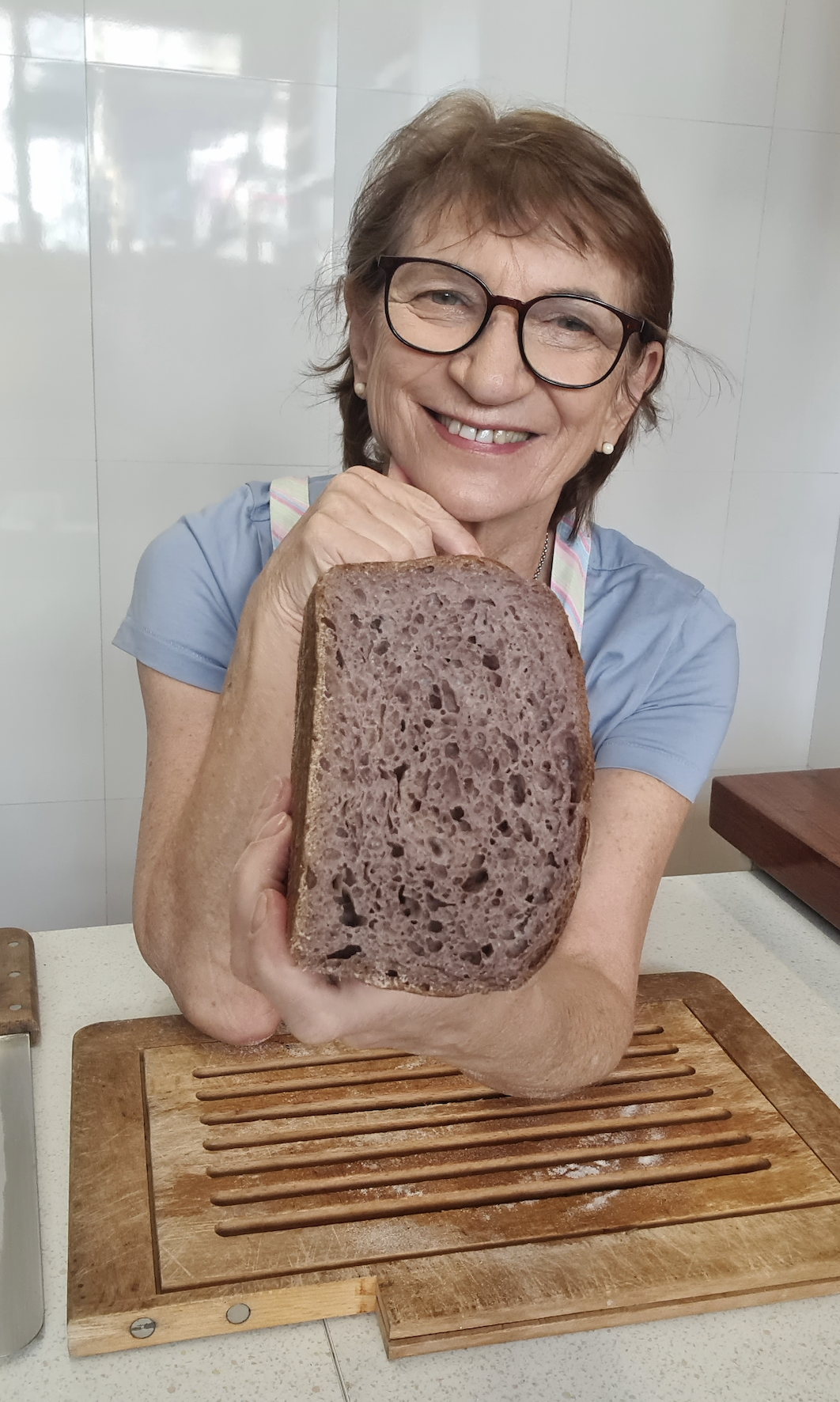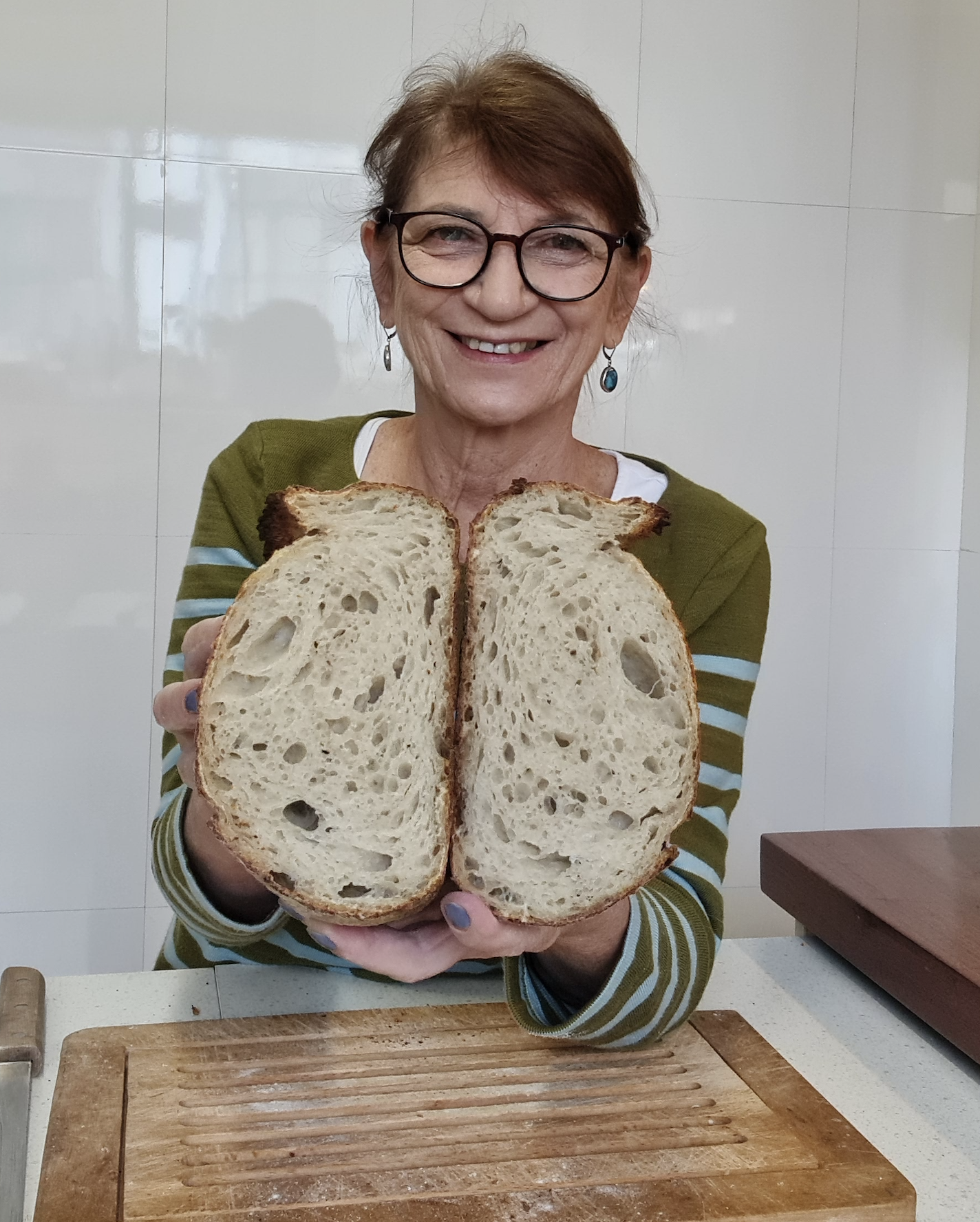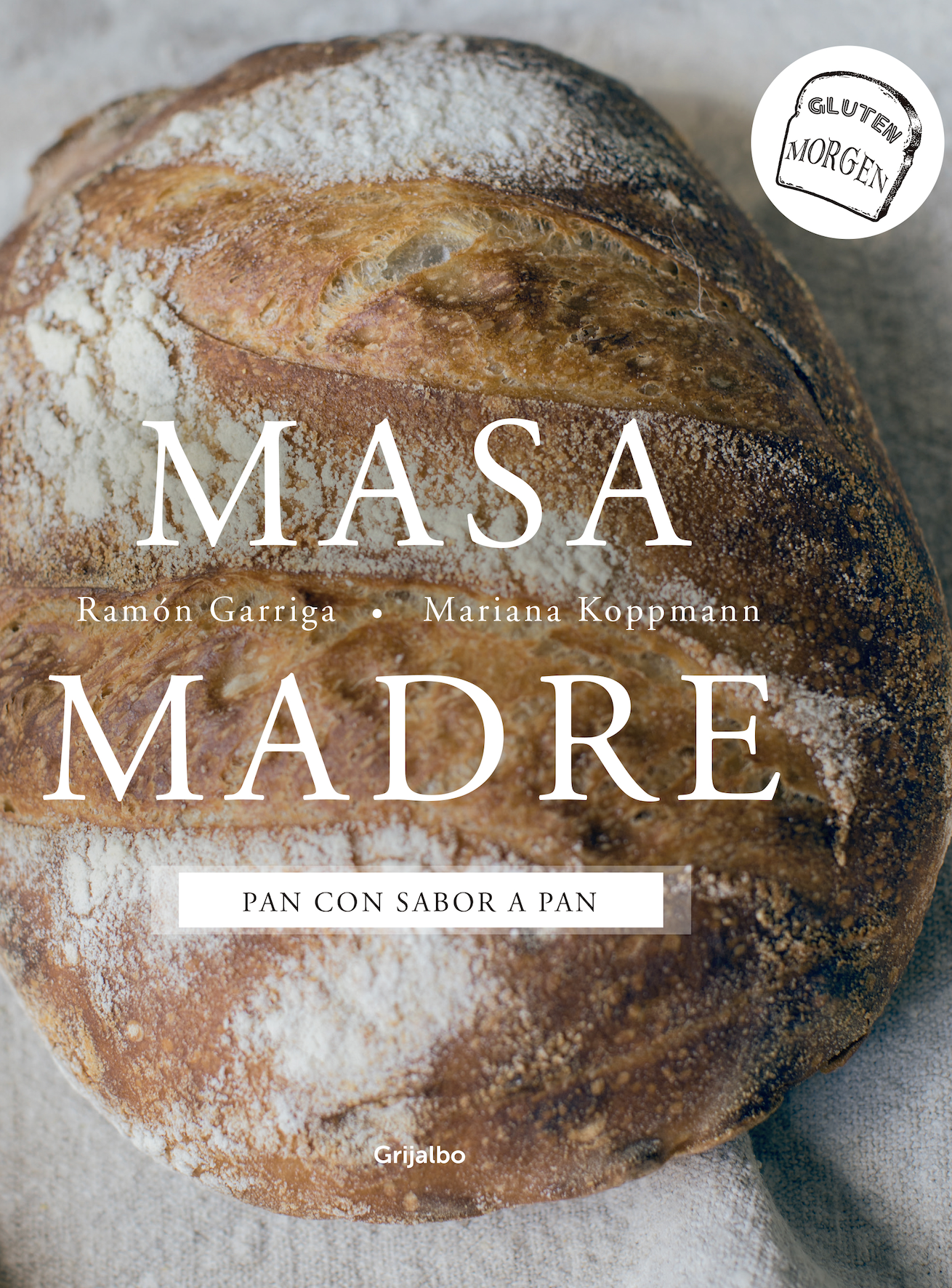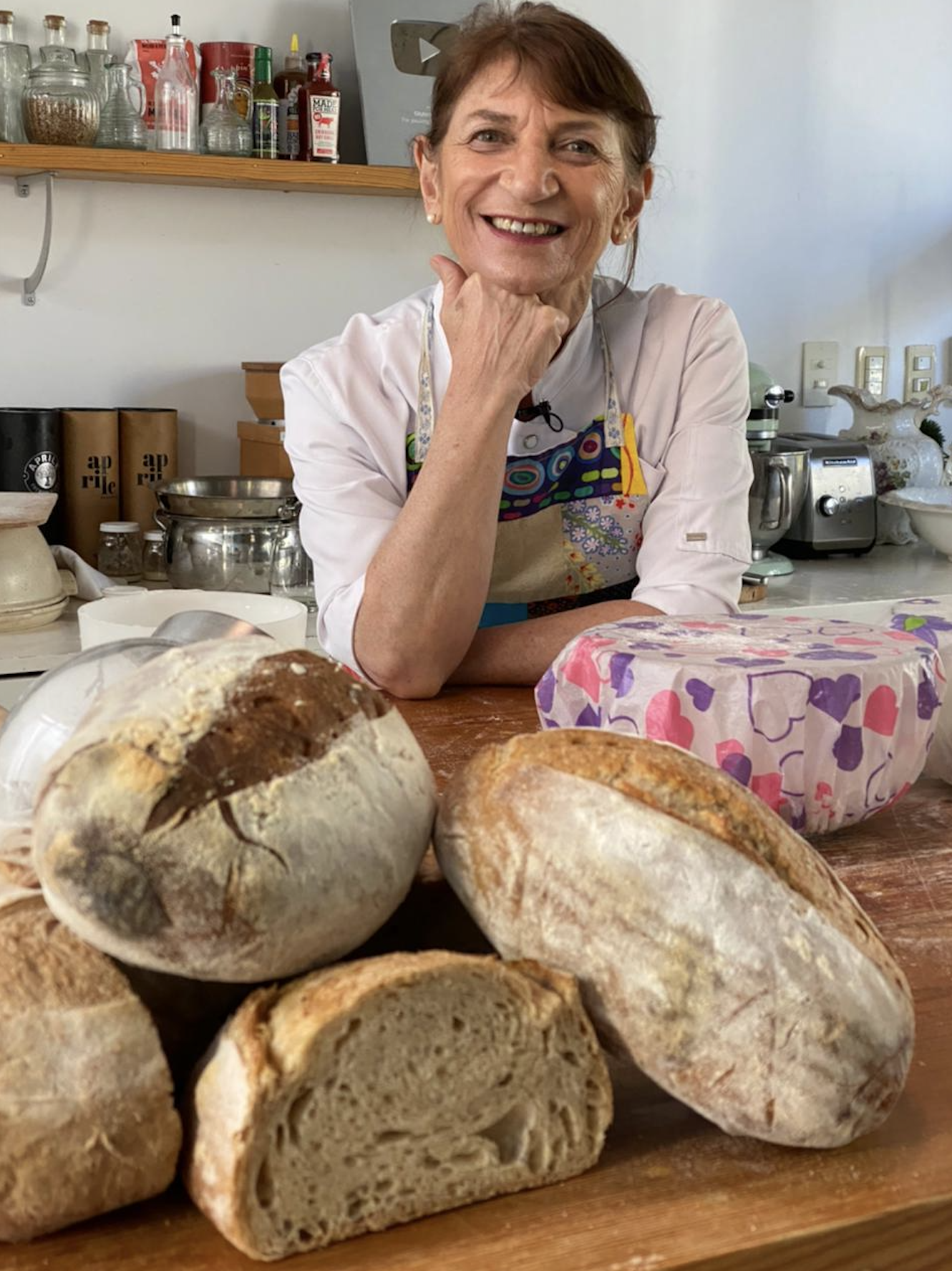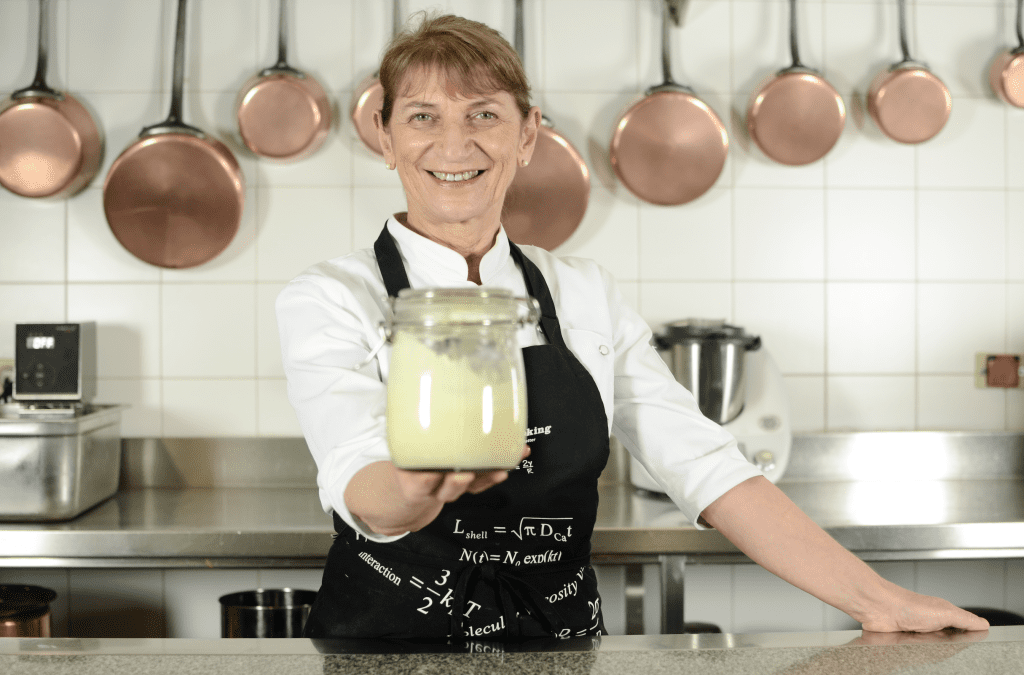Únase a nosotros en un viaje revelador al mundo del pan de masa madre con Mariana Koppmann, destacada en nuestra última entrevista en The Sourdough People. Mariana, bioquímica convertida en panadera de masa madre, profundiza en su transición de la ciencia a la cocina, su coautoría del libro “Masa Madre” y sus enseñanzas sobre las complejidades del pan de masa madre. Aprenda de sus experiencias sobre cómo nutrir iniciadores de masa madre, la ciencia de la fermentación y sus únicas perspectivas sobre la panificación. Extendemos nuestro sincero agradecimiento a Mariela Marques y Ramon Garriga por sus excelentes fotos y valiosas contribuciones. Descubra más sobre el profundo impacto de Mariana en el mundo de la panificación siguiéndola en Instagram @marianakoppmann. ¡Únase a nosotros para explorar las deliciosas posibilidades de la panificación con masa madre!
Welcome to The Sourdough People, your dedicated hub for all things sourdough! Today, we’re thrilled to share an exclusive interview with the remarkable Mariana Koppmann, a biochemist turned sourdough aficionado whose unique blend of science and culinary expertise has made significant waves in the food industry. Based in Buenos Aires Argentina, Mariana has been a trailblazer in food safety and quality management since 1996, consulting through her own firm and sharing transformative kitchen chemistry on her Instagram (@marianakoppmann). Mariana is also the co-author of the popular sourdough book “Masa Madre,” which has been instrumental in educating and inspiring bakers around the world. Dive into our conversation to discover how her journey from biochemistry to bread-making is inspiring bakers worldwide. Don’t forget to follow her on Instagram to catch all her fascinating insights and experiments!
Mariana, could you introduce yourself and share a little bit about your background?
Well, let me tell you about my journey. I’m Mariana Koppmann, born and raised in Buenos Aires, with a deep love for cooking ingrained in me from a young age. I pursued biochemistry at the University of Buenos Aires, hoping to find a career that matched my passion for science. But as I delved into the field, I realized that it wasn’t fulfilling me as I had hoped. It wasn’t until a friend of my father brought me a sample of food to analyze that I stumbled upon the science of food. I was fascinated by the intricate processes and the potential to make a real impact on food safety. Despite not having much knowledge in this area from my university studies, I dove headfirst into learning everything I could about food microbiology and safety. Soon, I found myself advocating for food safety in the Argentine food service industry, starting with teaching classes and working with restaurant associations. My journey led me to a culinary school, where I began teaching culinary chemistry classes, despite initially feeling unprepared for the task. But my passion for the subject drove me forward, and it became another stepping stone in my career. Then came my fascination with bread, sparked by encountering the work of two French bakers in Buenos Aires. I embarked on a journey to understand the science behind sourdough bread, even organizing seminars to share my newfound knowledge. Despite some initial failures, I persisted, and my skills grew over the years. And then, Ramon entered the picture. Our collaboration was serendipitous, born out of a shared passion for food science and an eagerness to share our knowledge. Together, we crafted classes that felt like second nature, despite having only just met. It was a testament to our mutual understanding and love for what we do. Writing books on food science for non-specialists became another avenue for me to share my passion with the world. Each edition was a reflection of my growing expertise and evolving interests, with the latest one featuring a significant focus on bread, influenced by my experiences and collaborations over the years. Ultimately, my approach to writing and teaching is simple: if I don’t love it or haven’t experimented with it in the kitchen myself, it doesn’t make the cut. This philosophy has guided me through my culinary journey, ensuring that everything I share comes from a place of genuine passion and experience.
You’ve been involved in teaching and consulting in the field of food, safety, and quality. How has that influenced your approach to sourdough making?
My journey into sourdough making has been deeply influenced by my background in teaching and consulting in the realm of food safety and quality. Understanding the intricacies of fermentation and the science behind it has been pivotal in my approach. My personal philosophy has always been to first master the fundamentals – in this case, crafting a good loaf of bread – before delving into the “whys” behind its success. Why does it work sometimes and not others? This question became my guiding light, propelling me into extensive research, attending various classes, and engaging in discussions with seasoned bakers. Two close friends, with their wealth of knowledge in baking and specialties like panettone, became invaluable mentors during the pandemic. Our weekly conversations became collaborative research sessions, exchanging insights on techniques, different flours, timings, and ingredients. Travelling internationally provided me with the opportunity to experiment with diverse flours, each with its unique characteristics. This journey of exploration was as much about understanding the science behind baking as it was about embracing the artistry. Engaging with bakers, both through direct conversations and platforms like Instagram, opened up a world of learning. Their experiences, troubleshooting methods, and shared challenges illuminated the path toward mastery. Answering countless questions, particularly during the pandemic, allowed me to deepen my understanding and refine my teaching approach. In essence, my background in food safety and quality has instilled in me a reverence for the science of sourdough making while emphasizing the importance of continuous learning, experimentation, and sharing knowledge within the baking community.
I was wondering, really, how much does the baker have to do with the bacteria in your starter?
I’ve often pondered the extent to which the baker influences the bacteria in a sourdough starter. It’s a fascinating aspect of the craft that delves into the intricate relationship between the baker, the environment, and the microbial community thriving within the starter. From what I’ve observed and learned through my experiences and discussions, the baker’s role is indeed significant in shaping the microbial composition of the starter. Factors such as the baker’s local environment, feeding regimen, temperature control, and even the type of flour used can all impact the microbial population within the starter. For instance, as you mentioned, the strength of the local microbial community can vary depending on factors like climate and geographical location. A strong community of microorganisms in the air and on surfaces can easily populate a starter, imbuing it with unique flavors and characteristics specific to that environment. Moreover, the feeding routine and the frequency of refreshments can also influence the microbial diversity and activity within the starter. Different feeding schedules may favour the growth of certain microbes over others, leading to subtle changes in flavor, texture, and overall performance of the sourdough. While the baker may exert a considerable influence on the microbial ecosystem of the starter, it’s also important to acknowledge the inherent variability and resilience of these microorganisms. Despite the baker’s efforts to control and guide the fermentation process, microbial populations can adapt and evolve over time, responding to changes in the environment and feeding conditions. In essence, while the baker plays a crucial role in nurturing and maintaining a sourdough starter, the microbial community within it is a dynamic entity shaped by a complex interplay of factors. Understanding and respecting this symbiotic relationship is key to achieving consistent and delicious results in sourdough baking.
What are some of the challenges you faced when you first started working with Sourdough and have you created your own gluten-free starter?
When I first embarked on my sourdough journey, I encountered a myriad of challenges, especially with my initial attempt at nurturing a sourdough starter from San Francisco. Despite diligently following the recipe, my starter met an untimely demise, likely due to the peculiarities of the December climate in Argentina and perhaps some inadvertent missteps in the feeding process. The gluten-digesting enzymes that developed in the starter wreaked havoc on its gluten content, rendering it unusable for bread-making. Undeterred by this setback, I delved deeper into sourdough lore and decided to create my own starter, this time deviating from the prescribed methods and trusting my instincts. I also ventured into the realm of gluten-free sourdough, intrigued by the challenge of crafting a starter with alternative flours. Experimenting with various gluten-free flours such as rice flour, buckwheat flour, and others, I encountered both successes and disappointments. Creating a gluten-free starter presented its own set of challenges, requiring patience and experimentation to achieve the desired results. I found that rice flour yielded the best results, providing a stable and reliable foundation for gluten-free sourdough baking. Despite the differences in texture and behaviour compared to traditional wheat-based starters, the process remained largely similar, albeit with adjustments in hydration levels and feeding ratios. In the end, the journey of working with sourdough, whether traditional or gluten-free, has been one of continuous learning and adaptation. Each challenge encountered has served as an opportunity for growth and experimentation, ultimately enriching my understanding and appreciation for the art of sourdough baking.
So you co-authored one of the world’s most popular sourdough books, Masa Madre, what inspired you to write this book and what would you hope that readers take away from it?
The inspiration behind writing this book stemmed from the success and joy we (Ramon and myself) experienced while teaching sourdough classes with together. We saw people eagerly learning and embracing the art of sourdough baking, and we wanted to extend that knowledge and enthusiasm to a wider audience. Our aim with Masa Madre was to distill the essence of sourdough baking into simple, understandable terms, while still delving into the science behind it. We wanted to demystify the process and empower readers to create their own delicious bread at home, regardless of their level of experience. The book is structured as a dialogue between us, presenting not only recipes but also discussions on the basic principles of sourdough baking. We included one foundational recipe with multiple variations, along with insights into the science behind each step. Additionally, we emphasized the importance of enjoying the process and having fun in the kitchen. While the book is currently available only in Spanish, we have considered the possibility of translating it into English. However, there are complexities involved due to the rights ownership with Random House. Despite this, we hope that readers, both Spanish-speaking and potentially English-speaking in the future, will find inspiration and confidence in their sourdough baking journey through Masa Madre. Our ultimate goal is for readers to feel empowered to experiment, learn, and create their own delicious bread, enriching their lives and those of their loved ones through the joy of baking.
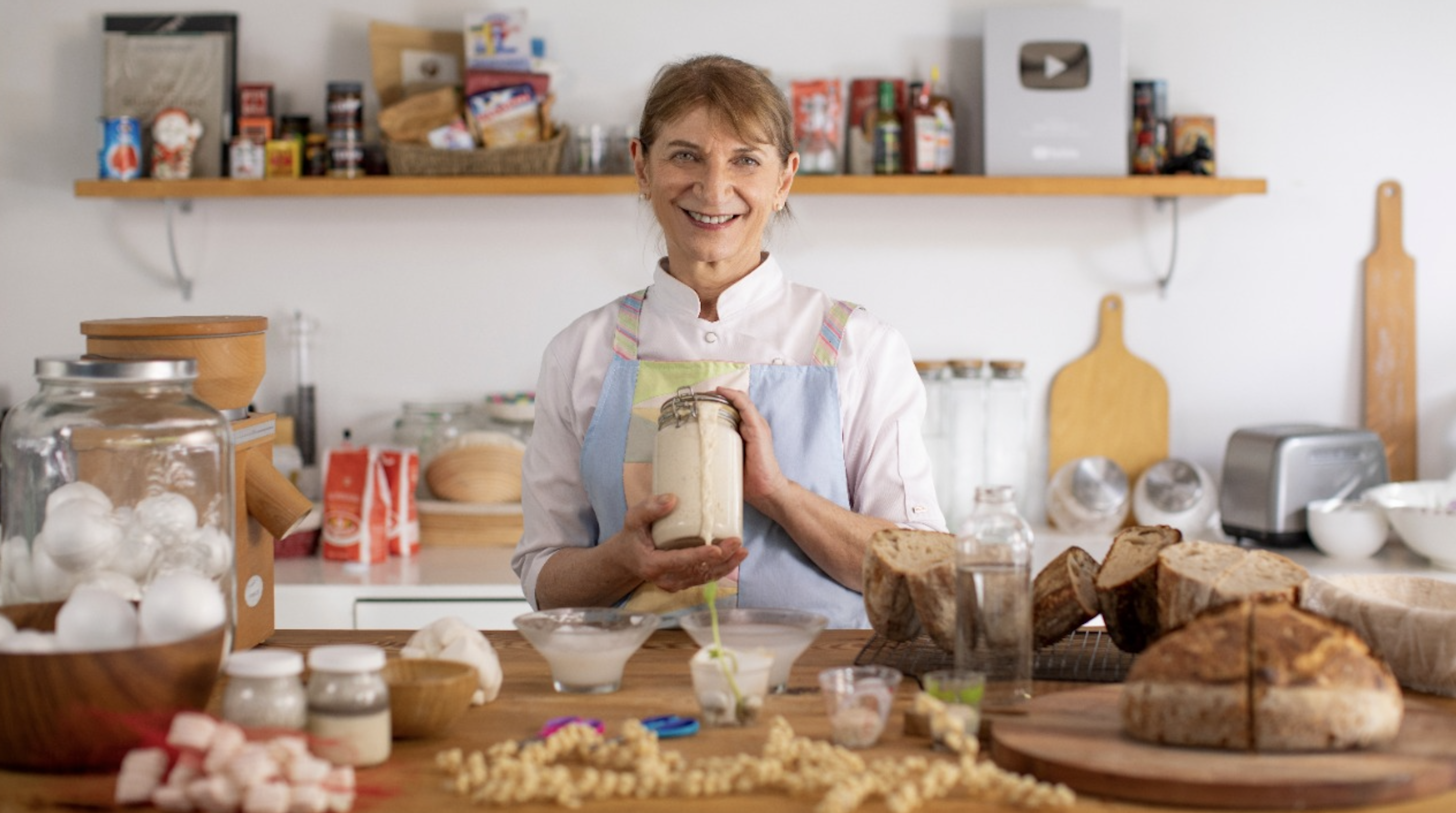
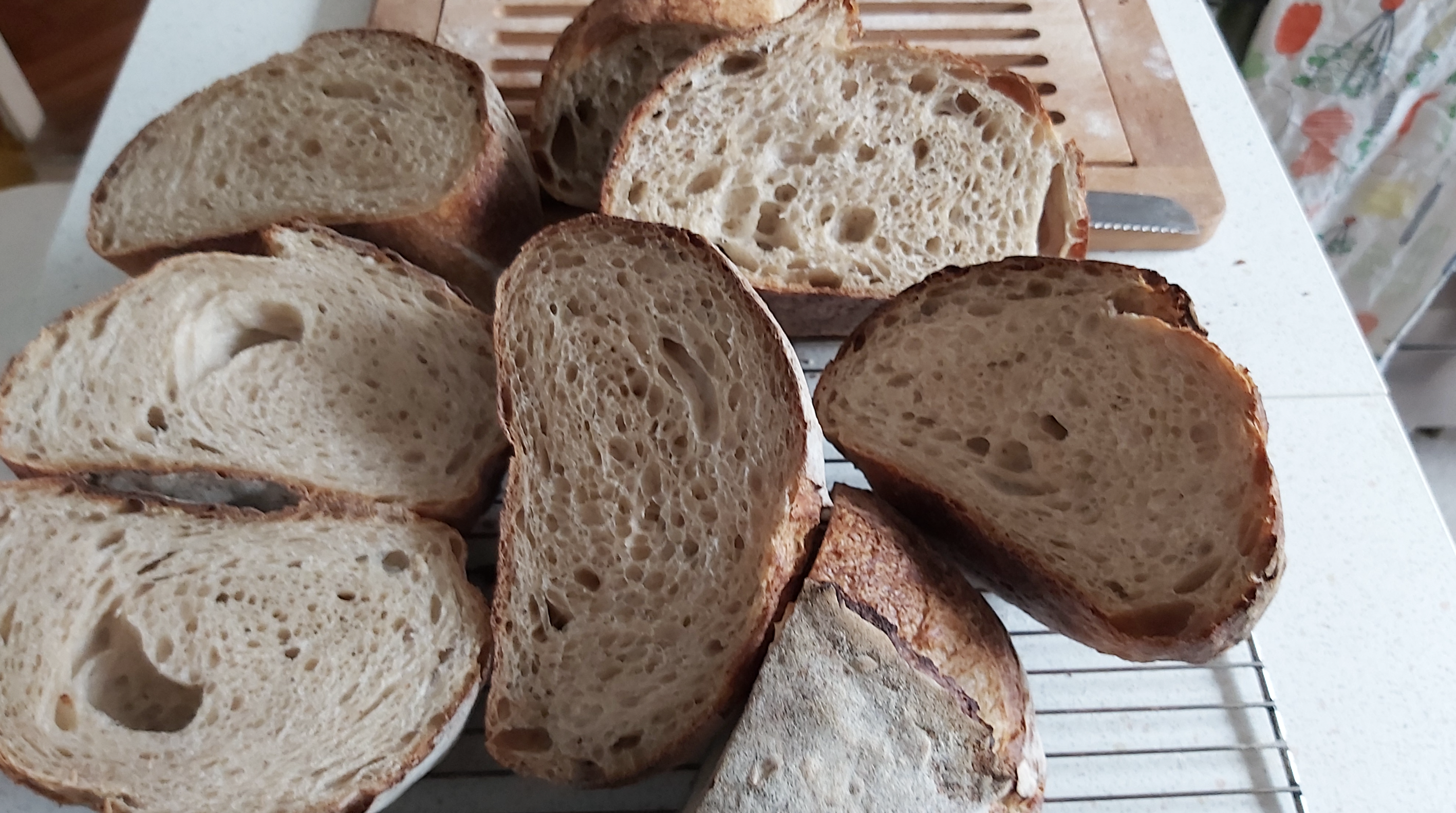
Out of all the creations you’ve made Mariana, do you have a personal favourite or signature recipe?
Out of all the sourdough creations I’ve made, I do have a personal favourite or what I’d consider my signature recipe. It’s a variation that’s similar to Ramon’s, but with slight modifications that suit my taste preferences. My favourite recipe consists of 85% organic all-purpose white flour and 15% whole wheat flour. This blend gives the bread a nice balance of texture and flavor. I usually opt for this combination because it yields consistently good results. In terms of hydration, I typically use around 70% water, but this can vary depending on the flour I’m using. For instance, if I’m using a particularly strong flour, like the one I recently acquired from Argentina, I may need to increase the hydration to around 75-78% to achieve the desired consistency in the dough. What sets my other signature recipe apart is the addition of cooked grains, which lend a unique flavour and texture to the bread. This touch adds depth and complexity to the loaf, making it a standout among other sourdough variations. Overall, while I enjoy experimenting with different flours and techniques, this particular recipe holds a special place in my heart for its consistency, flavour profile, and the joy it brings to those who taste it.
As a biochemist, how do you approach the science behind sourdough fermentation and its impact on bread quality?
As a biochemist, I find the science behind sourdough fermentation truly fascinating. What intrigues me the most is how we, as bakers, can manipulate and select specific microbial populations to achieve desired outcomes in our bread. When you consider the vast array of microorganisms present in sourdough, it’s remarkable to think about the role we play in shaping their community. By controlling factors such as temperature and feeding regimen, we essentially create an environment that favours the growth and activity of certain microbes over others. For instance, the temperature at which we maintain our sourdough starter and proof our dough can significantly impact which microbes thrive. It’s intriguing to note that while these conditions might not be optimal for all microorganisms, they create a selective pressure that favours the growth of those beneficial to the fermentation process while inhibiting the growth of potentially harmful ones. This careful selection and manipulation of microbial populations ultimately contribute to the unique flavor, texture, and aroma of our bread. It’s a testament to the delicate balance of nature and science at play in the art of sourdough baking. Approaching sourdough fermentation from a biochemical perspective allows me to appreciate the intricacies of the process and understand how subtle adjustments can have profound effects on bread quality. It’s a continual journey of exploration and discovery, where each loaf offers new insights into the complex interplay between microbes, flour, water and time.
In your experience, what are some common mistakes people make when starting with Sourdough? And how can they be avoided?
In my experience, one of the most common mistakes people make when starting with sourdough is blindly following recipes without considering the unique conditions of their environment and starter. Many recipes provide specific timeframes for fermentation and proofing, but these guidelines may not always align with the individual characteristics of your starter or the ambient temperature of your kitchen. For instance, if your starter is particularly sluggish or if your kitchen is cooler than average, following a recipe’s prescribed fermentation times could result in underdeveloped dough. Conversely, if your starter is particularly active or if your kitchen is warmer, sticking rigidly to the recipe’s instructions could lead to over-proofed dough and a flat, dense loaf. Another common mistake, especially in regions like Argentina where flours with high enzyme content are prevalent, is not properly assessing proofing before baking. Placing dough directly into the fridge without checking if it has adequately proofed can result in a lack of oven spring and a gummy texture in the final bread. To avoid these pitfalls, it’s essential for sourdough bakers to focus on understanding the dough rather than adhering strictly to recipe times. Get to know the behaviour of your starter, observe how it responds to feeding and temperature fluctuations, and learn to recognize the signs of proper fermentation and proofing. Adjusting fermentation times, proofing methods, and even flour types based on your observations will help you achieve consistent and delicious results in your sourdough baking journey.
Can you share some tips on maintaining a healthy sourdough starter and ensuring its longevity?
Certainly! Maintaining a healthy sourdough starter is crucial for consistent and successful bread baking.
Here are some tips based on my experience:
- Regular Feeding: Feed your sourdough starter regularly, even if you’re not baking with it. I recommend feeding it once a week to keep it active and healthy. If you neglect it for too long, it can become weak and less effective in leavening bread.
- Observation: Pay attention to the behaviour of your starter. Observe its activity after feeding – it should rise and double in size within a few hours. If it’s sluggish or not rising as expected, it may need more frequent feedings or warmer temperatures.
- Proper Storage: Store your sourdough starter in the refrigerator between feedings to slow down its fermentation process. This helps to maintain its stability and prevents it from becoming overly acidic or developing off flavors. Make sure to use a tightly sealed container to prevent dehydration.
- Reviving: If you’ve neglected your sourdough starter for an extended period and it appears dormant or weak, you can revive it by discarding some of the starter and feeding it regularly for a few days. This helps to rejuvenate the microbial activity and restore its vigour.
- Hygiene: Keep your sourdough starter and equipment clean to prevent contamination by unwanted microorganisms. Use clean utensils and containers when feeding or handling the starter, and avoid introducing foreign substances or contaminants.
By following these tips and maintaining a consistent feeding schedule, you can ensure the longevity and health of your sourdough starter, enabling you to enjoy delicious homemade bread for years to come.
What keeps you motivated and passionate about Sourdough and baking?
What keeps me motivated and passionate about sourdough and baking is the endless opportunity for creativity and exploration. I love the process of experimenting with different recipes, variations, and techniques to achieve the perfect loaf of bread. Each new batch is a chance to learn something new, whether it’s adjusting hydration levels, trying out different flours, or refining my shaping and scoring skills. Moreover, the satisfaction of creating something delicious and nourishing from just flour, water, and salt is incredibly rewarding. There’s a sense of connection to tradition and craftsmanship that comes with sourdough baking, knowing that I’m continuing a timeless practice that has sustained communities for generations. Additionally, the community aspect of baking is another source of motivation for me. Sharing my bread with friends and family, exchanging tips and recipes with fellow bakers, and seeing the joy that freshly baked bread brings to others is truly uplifting. Lastly, the never-ending quest for improvement keeps me engaged and excited about sourdough baking. There’s always something new to learn, whether it’s mastering a new technique, understanding the intricacies of fermentation, or exploring different flavor profiles. It’s this constant evolution and growth that fuels my passion for baking and keeps me coming back to the kitchen time and time again.
What advice would you give to someone starting their sourdough journey?
If someone is just beginning their sourdough journey, my advice would be to embrace the process and enjoy the journey. Start with a simple recipe that’s not overly complicated and doesn’t require too much water, especially if you’re unsure about your flour’s hydration capabilities. Stick with that recipe and bake it several times until you consistently achieve decent bread. By repeating the same recipe, you’ll gradually gain a deeper understanding of the sourdough process and how various factors like fermentation time, shaping, and scoring impact the final outcome. Take note of any differences you observe between batches and use them as learning opportunities. Additionally, don’t be afraid to ask questions and seek guidance from experienced bakers or join online communities where you can exchange tips and troubleshoot issues. Remember that sourdough baking is as much about the journey as it is about the destination, so be patient, stay curious, and enjoy the process of learning and discovery.
So my last question for Mariana. Is there anything else that you would like the worldwide Sourdough Bread community to know about you or your projects?
I’m proud to be a part of the Science and Cooking World Congress in Barcelona, which will be hosting its fifth edition this year in November. This event brings together experts from both the scientific and culinary worlds to explore the fascinating intersection of science and cooking. Each year, we delve into different subjects, making it a unique and enriching experience for attendees. Additionally, while my books are only available in Spanish, I’m excited to share that another book will be released in June, with a chapter on bread and sourdough bread recipes. While the details of translations are still being sorted out with the publisher, I’m hopeful that there will be opportunities to make my work more accessible to English-speaking audiences in the future. Overall, I’m deeply passionate about both science and cooking, and I’m committed to sharing my knowledge and experiences with the sourdough community. Whether it’s through workshops, books, or other projects, I hope to continue contributing to the collective knowledge and enjoyment of sourdough baking worldwide.
Closing Thoughts
Thank you for joining us on this enlightening journey into the world of sourdough with Mariana Koppmann. We hope her story has inspired you as much as it has us. For more intriguing tales and expert advice, follow Mariana on Instagram (@marianakoppmann) and stay connected with the pulse of culinary science and sourdough artistry.
We’re always on the lookout for exciting stories and topics from our community. If you have a sourdough story or topic you’d like to share, please submit it through our intake form for potential feature on our website. Don’t forget to connect with us on Instagram and sign up for our sourdough bread email newsletter to receive regular updates, announcements, and industry news.
Keep baking, keep experimenting, and keep sharing your sourdough stories with us at The Sourdough People!
